By Kirk Uhlmann
Since Herm has given a basic description of the game and Scott has provided a very nice overview of its play, I thought I would explain some of its background, how it came to be, and the reasons for some of the choices made in it.
Lamps was inspired by a desire to make a game that simulated World War I with the goal of being as accurate as possible, while making the game as simple and fast playing as possible, as well as giving players a real sense of history and also the dilemmas and tough choices leaders at the time faced. This came about from a growing enthusiasm in the history of WWI and a search for a game that met these criteria.
In my school days, I had a simplistic view of the First World War as being pointless carnage along static fronts coordinated by inept, or at least, unimaginative leaders. As my interest in military history grew over the years I came to realize that things were not as simple as they appeared. The military leaders were trained professionals and were at the dawn of ‘modern warfare’ and sincerely made attempts to realize strategic goals towards victory. No matter the conditions, war was upon them and it was their task to win it. Yes, defense had the advantage for the most part, and I wanted to convey to players of the game the same thoughts leaders at the time must have had, that a reasonable strategy for winning the war could be created and implemented if only enough resources could be available where and when needed and augmented by some innovative tactical considerations in order to achieve a critical victory. So the game would be a combination of applying military force utilizing limited resources and managing them appropriately.
James F. Dunnigan has always been one of my inspirations and a favorite author of mine. Though I began playing wargames as a young teenager, it was not until many years later when I began reading his books that I made the connection between him and SPI and many of the games I had enjoyed years before.
His “World War I” game was always one of my favorites, and I especially like the trade-off of space vs. resource points along the front lines. That game itself propelled my interest in the war further and I visited Liberty Memorial, the National WWI Museum in Kansas City, and began reading numerous books on the subject, including Barbara Tuckman’s The Guns of August, a very enjoyable read. Still being a fan of games, and owning several hundred war and Euro-games, I accumulated many themed to WWI. While I enjoyed them all, none gave me the sense of the war overall from a top level perspective.
Some were intricate and took days to play, others were a bit too abstracted – though very enjoyable. I knew I wanted a game where I could see forces accumulate on geography I knew, and that major changes in the front lines would be immediately visible, and to simulate the overall aims of the war without getting bogged down. I wanted a realistic strategic level simulation of the entire war that could be reasonably played in one evening – a tall order. I made an effort to research every game made on WWI and couldn’t find one that operated in exactly this fashion – the WWI game I wanted to play. Creating one would be beyond my abilities at that time, but in subsequent leisurely reading I came across much data concerning the economies and industrialization of nations during the war. As I had learned from Dunnigan, using (and more importantly – knowing how to interpret) real data can form the building blocks of a simulation.
The seeds of the game began at that point. With the economic data I had, I began constructing spreadsheets with various combinations of GDP, steel production, infrastructure, population, etc. to reflect a qualitative rating on each nation’s war making ability. I decided that I wanted the army units in the game to be generic, equal for the most part, and that differences in training and abilities be reflected in the nation’s ability to supply and manage the forces. This was a bit opposite to many wargames, where supply was equalized (simply tracing supply lines) and differences reflected in attack, defense, and movement ratings on each unit counter. Here, once an army was supplied, it would function the same regardless of nationality. The differences would be reflected in each nation’s ability to sustain combat operations and the amount of its forces it could keep operative. This was becoming very math intensive, but I decided that if all the hard work could be done at the front end, the benefits of realism and quick playability could be realized at the back end – actually playing the game. After much trial and error along with further research, things began to fall into place.
While originally I thought I would have to separately reflect both manpower and material, I came to realize that a ‘bloodless’ combat system could incorporate both by representing the resupply of both the material of the army, as well as the manpower replacements and logistics required to coordinate both. Since units wouldn’t be directly eliminated as a result of battle losses, the ebb and flow of battles along the front lines would be accurately represented by the depletion and resupply of the forces involved. I began finalizing the spreadsheet information correlating all of the economic data (with emphasis on industrial and areas related directly to war production), population, demographics, etc. to arrive at a single number for each nation that was a reflection of their war-making ability. The population figures gave a good guide to manpower resources combined with the actual data of forces mobilized over the course of the war. By using a formula to calculate forces available from the economic data and population and then comparing it the actual forces involved showed that the numbers were coming together.
Some differences from reality appeared – but this became the guide to some of the qualitative decisions that Dunnigan talks about when designing games. The Russians seemed able to field and project an effective fighting force more than they did historically. Were the numbers in error or was reality simply one result of what was possible? Essentially, the numbers were tweaked to reflect some of the poor training and logistics capability of the Russians, essentially resulting in their units actually representing a larger number of men and their ‘war production’ number being slightly reduced from the original number.
Likewise, the German units represent somewhat fewer men per army and their production number slightly increased to reflect their training, organizational abilities, and logistics. This allowed all the on-board units to still represent generic field armies for combat purposes. I had learned from other sources that the two alliances were almost equal, with the Triple Entente having an economic advantage and the Triple Alliance benefiting from an advantage of interior lines. The numbers I had at this point and the initial map reflected these points. I sought to further confirm my numbers by actually trying to normalize them against others’ works. I took Dunnigan’s WWI combat ratings along with the resource points available and did a year by year summary of force output. While they didn’t match exactly, the ranges and ratios were close enough to give validity to the spreadsheet calculations, and reflects different interpretations for different games. Of course, the scale is slightly different and some of the goals of simulation are different, but it gave me some confidence in the math work. I did similar comparisons with other games (and even specific battles compared to the forces that would be available in a strategic game) and while different, did not seem out of line. I wanted to be as realistic as possible but I didn’t want a World War I themed wargame, I wanted to game World War I.
I knew I wanted an attrition based ‘bloodless’ combat system and concurrently with researching all the economic data I had envisioned using a common system where the defenders fire first (to represent the defensive advantages) to disengage a certain number of attacking units, and the remaining attackers would fire to disengage the defenders, and would take over the territory if non-disengaged attackers outnumbered non-disengaged defenders (which is still somewhat represented in the naval combat system). Disengaged units would then be re-supplied by the production points and things would go on.
In reality, this didn’t work or feel right. Depending on the number of units on each side, production points required would sometimes be independent of the effort expended. So large forces could defeat a very small force with relative ease, and incur no cost. Once again, as I learned from Dunnigan’s books, just moving an army is a huge expense and logistical effort, let alone coordinating a massive attack. So it became clear that any unit making an attack must incur a cost, regardless of the result.
It was around this point that I came across articles and designs by Philip Sabin. While I had originally thought the design might have only casual interest or be entirely dismissed by gamers used to more complicated systems, his articles gave me the encouragement that simplicity and accuracy are not mutually exclusive and that the advantages of such a design could be had in both its streamlined playing time as well as its educational benefit. Professor Sabin’s articles on game design and his historical notes are a pleasure to read and I encourage everyone to take an active look at his works. His attrition based games handled some aspects better than what I had envisioned.
Originally, I had planned that armies would primarily move by advancing after combat (which still applies) and that any other forms of strategic movement prior to the attack phases would incur a cost of one production point per army moved per territory. This became awkward and allowed for surprise movements of huge numbers of armies that gave an unsatisfying result and unrealistic feel or that players simply couldn’t react fast enough within a turn or two against players sustained expenditures for movement. It also reduced the incentive to make attacks that was a key part of the game when only dealing with advance after combat. Adopting the limits for strategic movement among each faction seemed realistic (based on readings concerning mobilization and movement during the war) as well as balancing out the planning and build-up for attacks along the various fronts.
Before the card system was developed, a basic time track was used to both count the game turns as well as trigger potential events. At certain points, a neutral nation might join the war depending on a die roll and possibly modified by existing game situations, with a greater chance of joining in subsequent turns. The game basically represents World War I as it was fought among the different participants, and while there are chances that neutrals may join earlier or later (or not at all), there are no potential ‘what-if’ political situations in terms of which alliance to join. There is no provision for Italy to join the Central Powers (my own conclusions are that Italy was very unlikely to join the CP – it would either join the Triple Entente or remain neutral). Even if my ideas are incorrect, having Italy join the CP does not work from a game perspective. Key developments in Russia would be triggered and rolled for at designated intervals, modified by the military situation in the East. U.S. entry begins with a very small chance in 1916, increasing slightly over time, and (later) modified by U-Boat usage and results.
While the time track worked to assist in assessing the development of the main aspects of gameplay as the war progressed, it was more of a beta system to test the rest of the game. A second stage involved the use of time track cards to potentially trigger events, with a chance they could trigger other random events from a separate deck. Eventually a full system of Event Cards for each faction was developed and more thought given to the various interactions.
Handling U.S. entry has always been a tricky dilemma for WWI games. With the original U-Boat modifiers, the German player had too much influence on U.S. entry. That is to say, while historically the use of unrestricted submarine warfare contributed strongly to U.S. involvement and the game reflected that, it also unrealistically gave the German player too much control over the lack of U.S. entry by reducing or not using U-Boats at all.
From a game perspective this is somewhat of a challenge. You don’t want a situation where using the U-Boats likely triggers the U.S. response and so the optimal strategy is to never (or rarely) use them, nor do you want the situation where usage of unrestricted warfare has so little effect that the optimal strategy is to always use them, or lead to a static optimal strategy of always using them until some point near U.S. entry is reached and then stop. This isn’t the worst approach, as it can be argued that it follows the historic situation – use U-Boats until the U.S. has a strong reaction, and then start again in 1917 in hopes the U.S. doesn’t enter or enters too late. While this creates variability on the U-Boat effects and timing of potential U.S. entry, it presents little strategy decisions for the German player or sense of the unknown in terms of political reactions or other events pushing the U.S. There’s no point giving players choices if the optimal one is always clear.
Now one obvious solution is to simply have U-Boat usage trigger a modifier to U.S. entry, or randomly determine a modifier and increment them over time. However, this always gives the German player a clear picture of where the U.S. stands (probabilistically) at any given time, and so they can optimize accordingly as before. Many recent works argue that U.S. entry was more likely than previous thoughts had suggested and while the U-Boats had a strong impact and served as useful propaganda for public support, the road to U.S. entry was being driven to from several different paths. As the war progressed, U.S. banks and financiers were lending huge amounts of money to the Allies. Exports also increased dramatically. It became clear that if the Allies lost, it would be a major economic catastrophe for the United States. There came a tipping point that the U.S. was so committed economically that it could no longer afford to see the Allies lose.
The Russian Revolution had a double-impact. Removing the Tsar and establishing a fledgling democracy in Russia eliminated a lot of political opposition in the United States from powerful lobbies that opposed the Tsarist policies. With all the allied participants nominally democratic, the argument of making the world, ‘safe for democracy,’ became more prevalent, and the U.S. didn’t want to be the only major world democracy left out of the post-war situation.
Furthermore, with the political turmoil in Russia and the declining military situation there, it became clear to U.S. leaders that the Allies might lose, especially with Russia tinkering on the edge. Even though the Germans began unrestricted submarine warfare again in 1917, it seems no coincidence that the U.S. declaration of war came so quickly after the revolution and removal of the Tsar. President Wilson’s circle had seen that the U.S. would probably need to get involved and with the 1916 election over, re-election political considerations were eliminated.
The game attempts to represent these various factors towards the U.S. joining the war within the card system and three of the four faction decks have cards that can affect U.S. entry. Events that occur after Wilson’s re-election are weighted slightly higher, as this represents the posture being taken by Wilson’s cabinet. U.S. bankers and financial contributions give benefits to the Allies (in terms of a production point bonus that turn) but also move the marker along the U.S. entry track. Other U.S. domestic issues that relate to the war can also occur, including pressure from the Atlanticists, passage of the National Defense Act, and even the Isolationist movement which can reduce the effects of the other cards. There are multiple cards relating to German commerce raiding including the Open Ocean Policy demands of the U.S., the sinking of the Lusitania, the Sussex Pledge, and these relate to each other along with either the success or use of U-Boats and/or unrestricted submarine warfare.
All in all, the goal was to provide interesting dynamics for U.S. entry while ensuring that U-Boat raiding made a significant contribution, though not the only one. The German player will have to make key strategic decisions on how best to utilize the U-Boats as the political repercussions may not be immediately apparent. The entire event deck was computer modeled and simulated billions of times to measure the interrelated effects of the cards and the probabilities of the various events that the cards can trigger in order to make things as reasonable as possible.
In future articles I’ll discuss other aspects of the Event Cards, along with the Technology Deck and the combat system itself.
Game Resources:
 “The Lamps Are Going Out: World War I” – An Overview
“The Lamps Are Going Out: World War I” – An Overview
Consimworld Lamps Forum
Lamps Basic Description



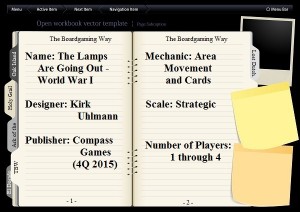
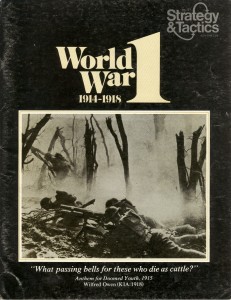
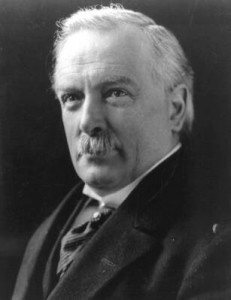
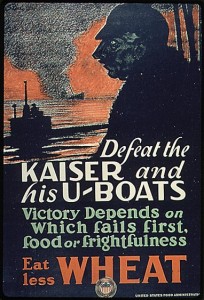
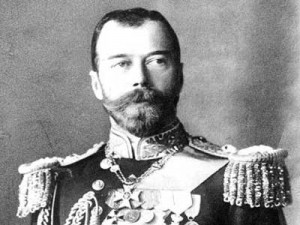
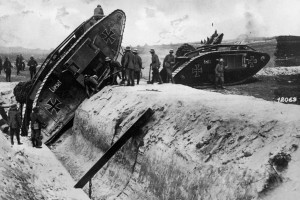
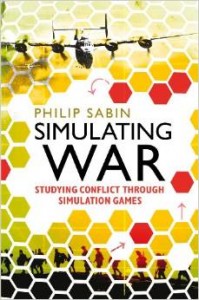
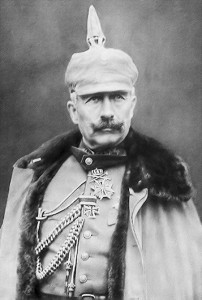
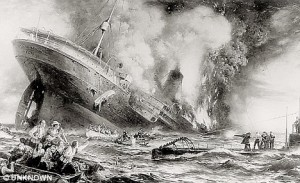

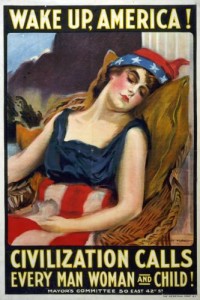
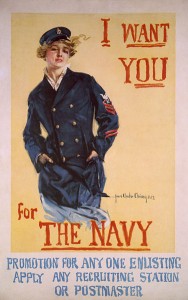
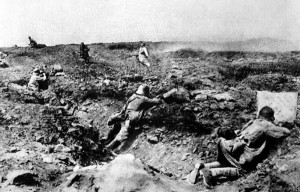
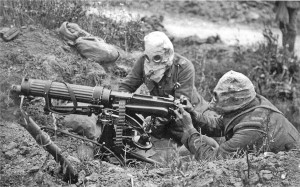
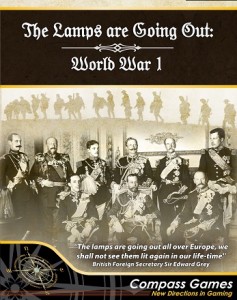






I think you have an absolute gem of a game here. How the different nations and alliances fought their battles and progressed their technologies has fascinated me in terms of how the war evolved from stalemate to the trying out of prepared solutions in 1918.
If the colour you are projecting into this design really kicks in the way we all hope it will, the game should do very well. Hermann told me of your design a good while ago. He was full of praise even then, and I am so glad you are seeing this work progress to a finished product.
And yes, I will pre-order from the UK!
I have playtested the game and greatly enjoyed it. However, I want to point out 1 problem. When you capture an area, you can move the entire army with the capturing unit at no cost. On the Western front, this is rarely a problem as the attackers will be largely spent at the point, In the East, The Austrians and Germans can stack, pick a weak point in the Russian line, smash it and then keep going with just 1 unit becoming spent for each area. In 1 game I took Moscow and St. Petersburg in single turn starting from Galicia. That sort of Blitzkreig is both ahistorical and unbalancing, Some sort of limit is needed.
Hey, Roger, thank you so much for the feedback! I love hearing the experiences from other sessions and especially the different dynamics and strategies that evolve. The Russian map has changed greatly from the initial days in order to get the right scale of time, distance, historic accuracy, and play balance (as has the Western Front). Not counting the distances involved for the moment, we found that the ‘stop sign’ at the Pripet Marshes combined with the somewhat limited paths around it provided Russia with ample opportunity for adequate defense. They will usually need a unit prepositioned behind the front lines (fresh or spent) for some flexibility but otherwise should be able to have at least a spent unit retreating in front of any advance, which would still require a die roll each time. We found it difficult to amass a large enough force of Germans/AH together without being molested or leaving other avenues too open. As seemingly weak as Russia can sometimes appear compared to the major powers, playing them seems particularly tricky. It’s a balancing act of limited offenses and mobilization. Perhaps make a couple attacks, then build two spent armies. Depending on circumstances, make one to three attacks, supply, or mobilize. After a few turns you can mount an offensive or stay put, supply the spent armies, and suddenly a lot of fresh Russian units are ready. I particularly enjoy playing the Russians but have found that I seem to be either a turn ahead or a turn behind on the critical point of attack/mobilization. In my experience, if the Russians make too many attacks the first two or three turns they will be at a disadvantage later – though I have been on the German side of a successfully aggressive Russia. Now unless most of the Russian units are completely out of position and their weakest link coming from Galicia is one fresh unit (and Russia should really have at least two units in each of the main three frontal spaces), the Central Powers would still need six successful die rolls in order to advance into the capitals. Depending on the route taken by the CP and the direction of retreat, this could be reduced to provide a clear path at some point but ideally, the Russians shouldn’t allow this by proper positioning. In our games, even when the CP had a small mathematical chance of advancing that far, it was too risky as failure would let them be cut off or risk losing Vienna (or even Berlin). So the advances would be more modest in order to resupply fully and still maintain a defensive frontage (somewhat like the German advances up to Riga in 1915). As far as the distances involved, it seems like it falls right on the edge of what’s possible. We had preferred not to limit advances to one space (or two) as this created gamey situations (for strategy from the defensive point of view) and the expense of supply in advances is already a limiting factor. I think the Germans could have advanced much further than they did and cover the equivalent of 3 or so game map spaces, but the Germans were ultra conservative in their logistical concerns. Napoleon’s timeframe through Russia and even the WW2 Germans (when using mostly horse and cart) indicate that such advances over an average seasonal turn (2-4 month) is perhaps just within the realm of possible. We had looked at having a couple other ‘stopping points in Russia (similar to the Pripet Marshes) but so far we never needed them. I love talking about these things and welcome further input and suggestion! Thanks!